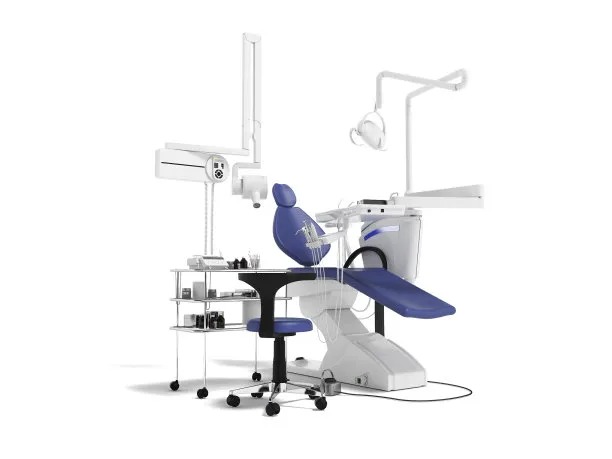Essential Precautions to Ensure Successful Root Canal Treatment and Promote Optimal Healing Post Procedure
Summary: Root canal treatment is an essential dental procedure aimed at saving decayed or infected teeth. To ensure its success and promote optimal healing post-procedure, patients must adhere to certain precautions before, during, and after the treatment. This article outlines essential aspects including pre-treatment consultations, the procedural environment, post-treatment care, and ongoing follow-up appointments. Each of these elements plays a vital role in not only administering the treatment effectively but also in facilitating a smooth recovery process, ensuring the longevity and efficacy of the dental work done. Understanding and implementing these precautions will significantly enhance patient outcomes and reduce the likelihood of complications.
1. Importance of Pre-Treatment Consultations

Before undergoing a root canal procedure, having a comprehensive consultation with the dentist is crucial. This initial meeting allows the dentist to assess the severity of the dental issue and to explain the entire procedure to the patient. A thorough examination, including X-rays, can reveal the extent of infection or decay, thereby leading to informed treatment planning.
Additionally, during the pre-treatment consult, patients should discuss any medical conditions or medications they are currently taking. This information helps the dentist to determine whether any specific precautions or adjustments are necessary to ensure a safe and effective treatment. Addressing these details upfront aids in identifying potential complications that might arise during or after the procedure.
Moreover, understanding the procedure helps alleviate any anxiety the patient may have. Informed patients are more likely to cooperate during treatment, which can lead to better outcomes. Thus, prioritizing this consultative stage lays the groundwork for a successful root canal treatment.
2. Ensuring a Safe Procedural Environment
The environment in which the root canal treatment is conducted is equally important. Dental clinics must adhere to strict sterilization protocols to minimize the risk of infection. Dentists should ensure all instruments are sterilized, and the treatment room is thoroughly cleaned before procedures.
Moreover, the use of appropriate anesthesia techniques plays a significant role in patient comfort. Proper administration of local anesthesia not only reduces pain but also allows the dentist to work more efficiently. This not only speeds up the process but also enhances the quality of care received.
In addition to the physical environment, emotional comfort of the patient should also be prioritized. Creating a calming atmosphere with soothing music or distractions can help patients relax. A relaxed patient is less likely to experience complications during the procedure, resulting in a better overall experience.
3. Comprehensive Post-Treatment Care
Once the root canal procedure is completed, proper post-treatment care is vital for optimal healing. Patients should receive clear instructions on how to care for their teeth in the days following the treatment. These guidelines often include recommendations for avoiding hard foods, maintaining oral hygiene, and understanding signs of any complications.
For the first 24 hours post-procedure, patients should be advised to avoid eating until the anesthesia wears off to prevent accidental biting of the tongue or cheeks. Additionally, over-the-counter pain relief medications can be utilized to manage any discomfort during initial recovery.
Monitoring the treated area for any unusual symptoms, such as prolonged swelling or excessive pain, is also essential. Patients should be educated on when to seek further dental attention to promptly address any potential complications. By following these post-treatment care protocols, patients can significantly improve their recovery trajectory.
4. The Importance of Follow-Up Appointments
After a root canal treatment, follow-up appointments are crucial to ensure the tooth is healing properly. These appointments allow the dentist to check for signs of infection or other complications that may arise after the procedure. Regular monitoring can prevent small issues from escalating into major problems.
During follow-ups, the dentist may take additional X-rays to assess the state of the root canal and ensure that the canal has been properly filled and sealed. This step is vital for confirming the success of the treatment and ensuring the longevity of the tooth.
Furthermore, these follow-up visits foster a trusting relationship between the patient and the dental practitioner. Patients feel more supported and are likely to voice any concerns they might have, leading to better overall satisfaction with the care provided. Therefore, committing to regular follow-ups enhances the long-term success of root canal treatment.
Summary:
In summary, adhering to essential precautions during root canal treatment can significantly improve the chances of success and facilitate optimal healing. Taking the time to prepare through pre-treatment consultations, ensuring a proper procedural environment, following comprehensive post-treatment care, and committing to follow-up appointments are all critical steps in this process. By understanding and implementing these precautions, patients can contribute to their dental health and ensure a positive outcome.
This article is compiled by Vickong Dental and the content is for reference only



